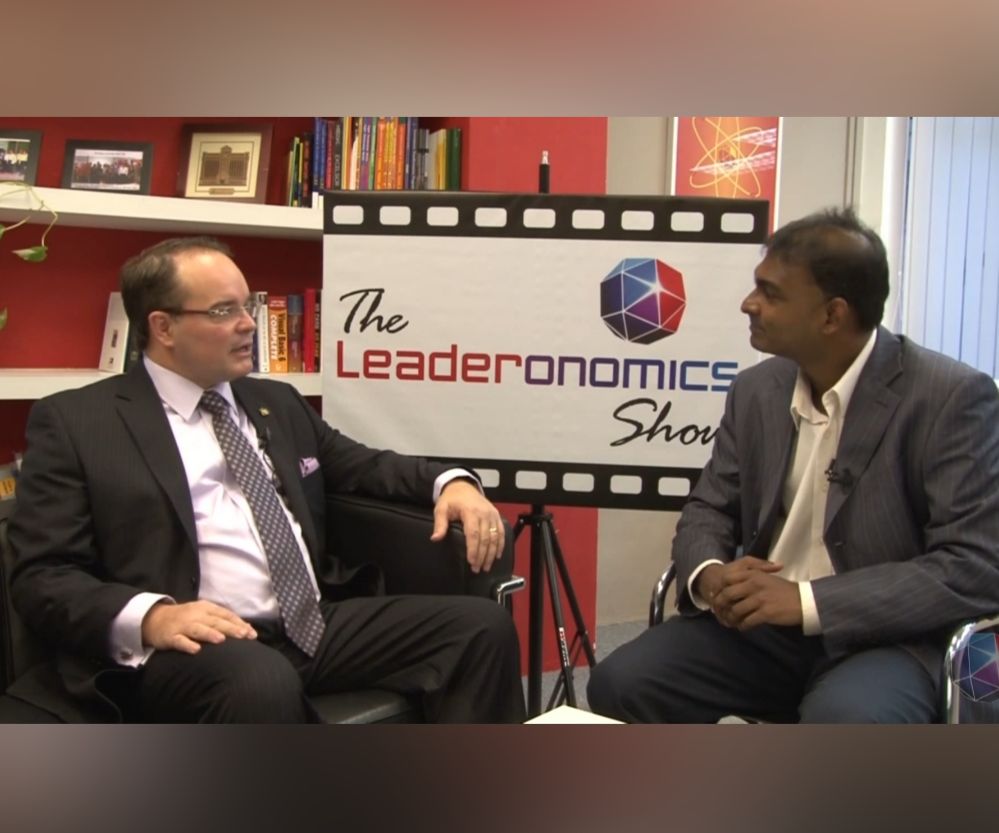Can’t Get Your Message To Stick? Try Telling A Story.

Real-life experiences, shared from the heart, lead to business results
What does it take to get a business leader out of bed extra early and fighting through rush hour traffic on a Monday morning? The desire to tell better stories, apparently!
Earlier this week, some 120 chief executive officers and senior leaders gathered to hear what Mark Schenk, the managing director of Anecdote International, had to share on this subject. Anecdote is recognised as a world leader in the use of storytelling in business.
About half an hour into the session, Schenk put his audience to a little test. He ran an animated video, just over a minute-long, in which three shapes – a large triangle, a smaller one and a circle – were seen interacting on the screen around a rectangle through a series of energetic movements.
“What do you think this (video) means?” Schenk asked the audience at the end of the clip.
“Two men fighting over a girl!” said one audience member. Another said the rectangle was trying to attract the other shapes into it, but was failing and ultimately gave up.
After a few more stabs by the audience at interpreting what they had seen, Schenk revealed that there was no definitive answer and never has been, but the exercise had not been without a purpose.
Abstract messages go nowhere
“I’m not doing this just to have some fun. This was an experiment, done in 1944 by scientists who wanted to examine peoples’ responses to ambiguity,” Schenk said, referring to the work by psychologists Fritz Heider and Marianne Simmel.
“If you take that animation and apply it to the communications that we make at work you get the No. 1 reason why our staff don’t understand us and say, ‘please do better’. That’s because the majority of our messages, particularly as we get more senior, become more abstract,” he added.
“That video was completely abstract. Every human being that runs into it has to interpret it. And our interpretation is based on our experiences and it has nothing to do with fact or truth. Stories are not abstract. And they are much more memorable than facts and assertions.”
And more importantly, stories capture attention, and inadvertently, focus. Told well, a story can cut through chaotic situations and bring about a moment of order.
Leaders in corporations can seize upon this chance to use the power of storytelling to bring their workforce to the same page, especially in times of ambiguity, says Schenk.
“Everyone’s a storyteller. Humans are natural storytellers, but we have just forgotten to do it at work.”

Beyond bulletpoints and slideshows
“There’s a natural urgency for us to convey what we think,” says Bharat Avalani, a veteran FMCG marketer and the Malaysia-based global partner of Anecdote.
“At work, we typically do so with PowerPoint (presentations) and bullet points, but the power of just telling is greater.”
Bullet points and slideshows are good to get consensus. But to inspire action, you need stories.
“Stories are concrete. Stories are memorable. Stories are influential,” Schenk added, explaining that workplace messages can grow abstract – particularly when people move up to more senior positions – and contain bigger words that mean little to their audience.
Simple words, examples and recounts, Schenk said, make the best stories for business audiences. It’s also important to include a timestamp, details, characters, dialogue and most crucially, the lesson.
Read Avalani’s article: How To Spot A Story
People think stories are about words. But stories are about images, pictures. Your task is to have enough detail for someone to be able to picture what’s happening. If you can’t picture the word, then it’s very hard for people to understand you. Don’t overthink your stories. Tiny moments can have incredible impact.
“With our stakeholders and board members, we use big words and we assume they interpret it the same way as we do. It’s a big mistake, not only because they could get it wrong, but because you can have wildly different interpretations of the very same message,” he explained.
There is a structure to compelling storytelling, and it’s critical to recognise this, especially if it doesn’t come to someone naturally.

So, what makes a good story at the workplace?
Schenk explains the Clarity Story Pattern (see Figure 1) — a way to identify crucial parts of your story — which divides your story into parts that keep your audience engaged.
“The Clarity Story pattern is very powerful. It’s not as simple as it sounds, but if you invest just 10 minutes, you might be surprised to see how clear your messaging becomes,” he said.

Figure 1
“Being a storyteller at work is a skill, and you definitely need some knowledge. But one of the key things that you need is practice, because as you practise more, you understand the things that you need to add in. But most importantly, you would know the things you can get rid of.”
Societies the world over know the power of a story well told and refined over time. This is true for narratives ranging from well-loved bedtime stories to folk legends, from urban legends gone viral to favourite anecdotes about our families, friends and communities.
“As it turns out, I have been using the power of storytelling without even knowing it,” Avalani said. “But it wasn’t till I met Mark in August last year that I understood how storytelling is a process, and that it can be done deliberately, purposefully and repeatably.”
Mark Schenk and Bharat Avalani are the managing director and global partner, respectively, of Anecdote – an international company that trains business leaders to create compelling brand experiences through storytelling.
On Mar 13, they jointly conducted ‘Storytelling for CEOs’ – a special preview session, organised by Leaderonomics, on how CEOs and top executives can use storytelling as to inspire action in the marketplace. Check out photos from that day on our Facebook page! To learn more about how Anecdote can help your leaders tell oral stories with impact, e-mail info@leaderonomics.com
Lydia is an editor at Leaderonomics. She believes that curiosity is the key to understanding the uniqueness of the world around us. Write to us with your thoughts about this story and e-mail them to editor@leaderonomics.com
Leadership






